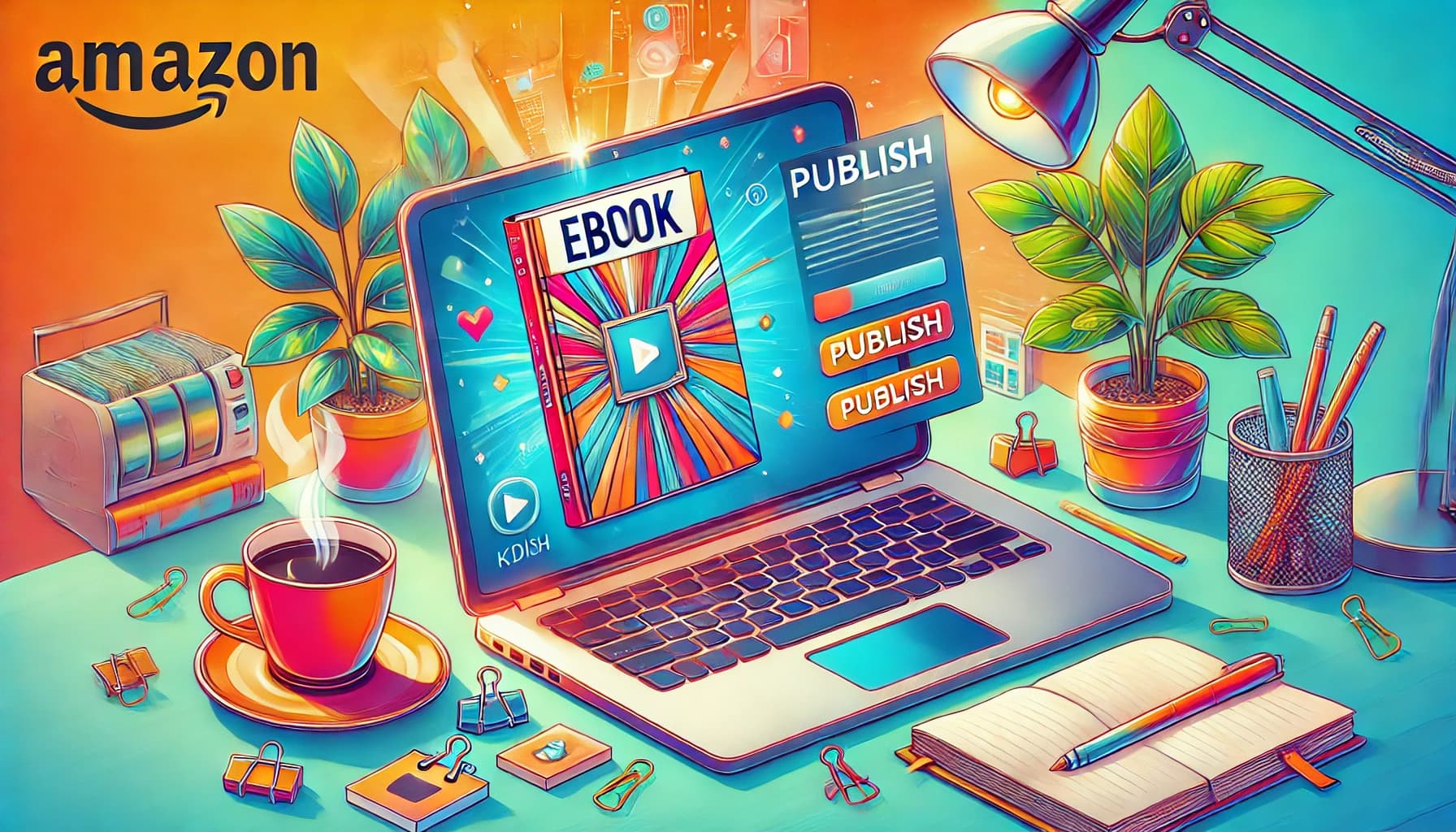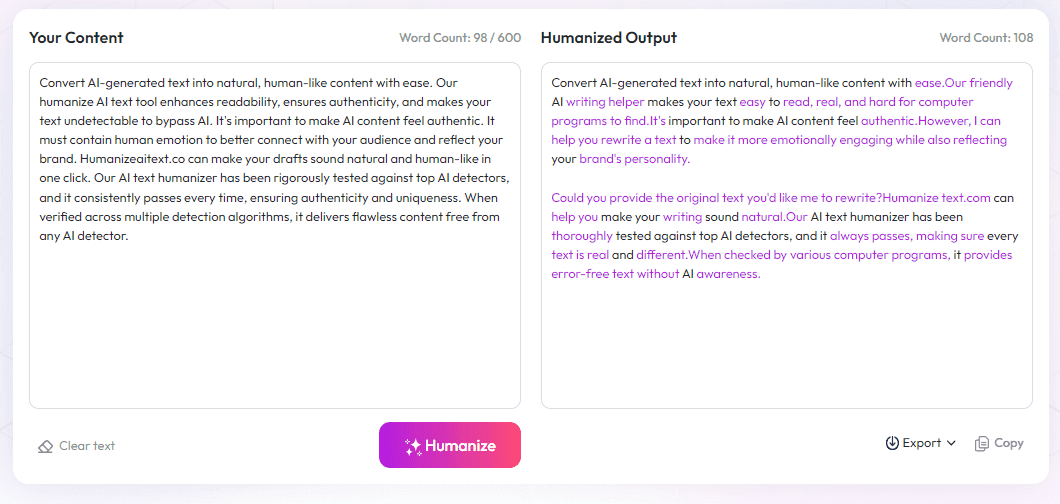Table of Contents
Looking to publish an eBook but feeling overwhelmed by formatting? You're not alone—many authors find the process tricky and time-consuming. But here's good news: with professional eBook formatting services, you can get your book looking polished and ready to impress readers.
Keep reading, and you'll discover how choosing the right service can save you headaches and ensure your book fits perfectly on various platforms. I'll also cover what to look for and how to find the best options at a price that makes sense.
In the end, you'll have simple tips to get quality formatting without breaking the bank, making your publishing journey smoother and more enjoyable.
Key Takeaways
Key Takeaways
- Professional eBook formatting ensures your book looks polished and works well across all devices and platforms, making it easier for readers to enjoy.
- Choosing the right service saves time, avoids common mistakes, and can improve your chances of passing store standards without rejection.
- Formatting options range from simple conversions to complex interactive layouts, with prices varying based on design complexity and features needed.
- Focus on platform requirements (like Kindle or Apple Books), and check experience, reviews, and turnaround times before hiring a formatter.
- Preparing your manuscript with clear structure and high-quality images helps get better results and reduces the risk of formatting issues.
- Preview your eBook on multiple devices to catch problems early, and consider adding interactive features carefully based on where you'll publish.
- Final steps include meeting platform specs, creating good metadata, and designing an eye-catching cover to attract readers.
- Staying aware of trends like visual-rich genres and mobile-friendly formats can help you adapt and succeed in a growing eBook market.

What Are eBook Formatting Services?
eBook formatting services help authors and publishers turn their manuscripts into professional digital files like EPUB or MOBI, ready for distribution across multiple platforms. These services ensure your book looks great on all devices and e-readers, from Kindle to iPads. They handle everything from adjusting fonts and layout to adding clickable table of contents and interactive features.
In a market projected to reach over USD 22 billion by 2030, having a properly formatted eBook can make a real difference in attracting readers and boosting sales. Whether you’re self-publishing or working with a publisher, a good formatting service transforms your raw manuscript into a polished, ready-to-read digital masterpiece.
Many authors choose professional formatting to avoid common pitfalls like inconsistent layouts or compatibility issues. These services often include converting your document into popular formats, verifying readability, and ensuring your eBook meets platform-specific guidelines. This way, you avoid headaches and get a product that looks excellent everywhere readers prefer to buy or read.
Why Choose Professional eBook Formatting Services?
Opting for professional eBook formatting helps your book stand out with a clean, polished look that appeals to readers.
Good formatting reduces errors, enhances readability, and improves navigation—crucial factors for making your book enjoyable and accessible.
Plus, a well-formatted eBook increases the chances of passing platform quality checks and minimizes the risk of rejections or refunds. For authors aiming to succeed in a competitive market, investing in quality formatting is a smart move.
According to recent data, the e-book market is booming, with self-published titles often skyrocketing in sales when they look professional. Proper formatting can also improve your book's discoverability and create a consistent brand image across your works.
Types of eBook Formatting Services Based on Complexity
eBook formatting can vary from simple to complex, depending on your book's design needs.
- Basic Formatting: Converts your manuscript into EPUB or MOBI with standard fonts, spacing, and a clickable table of contents. Ideal for straightforward novels and text-only books.
- Intermediate Formatting: Adds images, chapter breaks, custom fonts, and basic interactive elements. Great for cookbooks, children’s books, or textbooks.
- Advanced Formatting: Includes multimedia integration, interactive quizzes, embedded video, and animations. Perfect for educational resources, graphic novels, or highly stylized works.
The complexity of your book influences how much time and effort the formatter needs to invest, which impacts the overall cost. For example, a graphic-rich comic might require a special service tailored to visual content, while a simple novel might need only basic conversion.
Pricing and What’s Included in Each Service Level
Most formatting services offer tiered pricing, reflecting the work involved:
| Basic | Intermediate | Advanced |
|---|---|---|
| Approx. $50–$150 | $150–$300 | $300 and up |
Basic packages typically include converting your manuscript to EPUB/MOBI, basic styling, and a clickable table of contents. Intermediate services add custom fonts, images, and better layout adjustments. High-end services incorporate multimedia, complex interactive elements, and custom design work.
It's worth checking what each package includes—some might offer editing, cover design, or marketing tips bundled in, making your investment even more worthwhile.
Popular eBook Formatting Options and Platforms
When formatting your eBook, consider where you plan to sell or distribute it. The two most popular platforms are Amazon Kindle Direct Publishing (KDP) and Apple Books, but others like Barnes & Noble Nook or Kobo are also significant players.
Most formatting services cater specifically to these platforms, ensuring your ebook complies with their standards. For Amazon, your eBook needs to be in MOBI format, while EPUB is preferred for Apple Books and others. Some services also create fixed-layout files suitable for comics and magazines.
Features to Look for When Selecting an eBook Formatting Service
Not all formatting services are created equal. Here’s what to keep in mind:
- Platform compatibility: Can they format for your preferred stores?
- Experience: Do they have a portfolio or reviews demonstrating quality?
- Customization options: Can they handle complex design requests?
- Speed and turnaround time: How fast can they deliver?
- Customer support: Are they reachable for revisions or questions?
Choosing the right service saves you time and headaches—and ensures your book looks its best in front of eager readers.
Steps to Find the Best eBook Formatting Service for Your Book
Start by researching reputable providers with positive reviews.
Compare their packages and prices, making sure they meet your specific needs.
Request samples or examples of previous work to assess quality.
Check their timelines and revision policies so you know what to expect.
Finally, reach out with any questions—you want a partner, not just a service provider.
Tips for Getting Quality Formatting at a Good Price
Look for bundled packages that combine formatting with editing or cover design—which can save money overall.
Consider submitting your manuscript early, giving the formatter more time to work without rush fees.
Check freelancer platforms for experienced professionals offering competitive rates.
Once formatted, always preview your eBook on multiple devices to catch issues before publication.
And don't forget—investing in quality now can pay off in better reviews and higher sales later, especially as the global eBook market continues to grow rapidly.

Trending Genres and Formats in the Growing eBook Market
As the eBook scene expands, certain genres like comics, graphic novels, and fantasy are pulling ahead in popularity.
Graphic content, especially webtoon-style comics, now account for a faster growth rate of about 5.12%, driven by mobile reading habits in regions like Asia Pacific.
Self-help and educational eBooks also continue to perform well, especially with the rise of subscription services that favor themed collections.
Among formats, fixed-layout eBooks are gaining traction for visually rich works, requiring specialized formatting that ensures images and layouts stay consistent across devices.
Understanding these trends helps authors tailor their projects—whether it's a manga, coloring book, or educational guide—to meet current reader preferences.
Common Mistakes to Avoid When Formatting Your eBook
One of the biggest pitfalls is inconsistent styling, which can make your eBook look unprofessional and turn off readers.
Another frequent mistake is neglecting platform-specific requirements, leading to rejection or formatting errors on stores like Amazon.
Don’t forget to test your eBook on multiple devices; what looks good on a tablet may be unreadable on a phone.
Skipping the creation of a proper table of contents (TOC) can frustrate readers who want quick navigation, so make sure your clickable links work smoothly.
Lastly, avoid over-complex formatting in basic books—simplicity often ensures greater compatibility and easier updates later on.
How to Prepare Your Manuscript for Formatting
Start with a clean, well-structured manuscript—use consistent headings, paragraph styles, and formatting to make your job easier.
Remove any extra spaces or tabs that may interfere with automatic styles in formatting tools.
Ensure your chapters are clearly labeled, and include section breaks if needed, especially for books with multiple parts or genres.
Embed or mention image placements if your book relies heavily on visuals, and keep image files in high resolution.
Review your manuscript for typos or formatting inconsistencies—what you see as minor could cause major issues during conversion.
Best Practices for Formatting Your eBook for Multiple Devices
Use responsive formatting, meaning your layout adapts to screen size, for a smooth experience across Kindle, Apple Books, Nook, and other platforms.
Stick with popular fonts like Georgia or Times New Roman for readability, and avoid fancy fonts that may not render well everywhere.
Keep image sizes reasonable—high resolution is good, but large files can slow down load times or cause issues in smaller screens.
Test your formatted eBook on different devices or simulators to identify and fix potential display problems.
Incorporate a clickable table of contents that works seamlessly on all platforms for better navigation.
How to Incorporate Interactive Elements into Your eBook
Including interactive features such as clickable quizzes, embedded videos, or animations can boost engagement—just make sure they’re supported by your target platform.
Use the right tools, like **Adobe InDesign** or specialized eBook creators, to embed multimedia without disrupting the reading experience.
Test each interactive feature thoroughly—what works on one device might not on another, especially with multimedia-heavy books.
Balance interactive content with essential storytelling; too much can distract rather than enhance your work.
Remember that platforms like Apple Books support more interactivity than Kindle, so choose features accordingly.
Getting Your eBook Ready for Distribution
Once your book is formatted, double-check that files meet the specifications of the distribution platform you’re targeting—be it Amazon, Apple, Kobo, or others.
Create clear, compelling metadata, including titles, author info, and keywords, to help your book be found by readers.
Design an attractive cover—since it’s the first thing people see—using high-res images and appealing fonts, and ensure it complies with platform size requirements.
Upload your files and metadata, then use previewer tools provided by platforms like Amazon’s Kindle Previewer to see how your book appears in different formats.
Address any issues, finalize your files, and go live. Remember, the eBook market is constantly evolving; stay updated with the latest platform guidelines.
Future Trends in eBook Formatting and Publishing
The eBook world is set to keep evolving with innovations in multimedia, AR, and even AI-driven customization.
Authors can expect more tools that simplify complex formatting tasks, making it easier to include interactive or multimedia elements without expensive software.
Subscription platforms and libraries might introduce new standards for licensing, access, and multi-user licenses, which will influence formatting requirements.
With the growth of regions like Asia Pacific, mobile-first formatting will become even more critical, emphasizing lightweight files and fast-loading content.
Being aware of these trends can help you future-proof your work and adapt quickly in a competitive market that’s expected to reach USD 22.76 billion by 2030. For some actionable ideas on diversifying your publishing approach, check out how to (https://automateed.com/publish-a-coloring-book/).
FAQs
eBook formatting services prepare your manuscript to display correctly across various platforms and devices. They involve converting your content into formatted files like EPUB or MOBI, ensuring a professional look and smooth reading experience.
Professional formatting ensures your eBook looks polished and functions well on all platforms. It saves you time, reduces errors, and increases your book's chances of being accepted on major distribution sites.
Formatting options vary based on complexity, including simple conversions for basic devices and advanced designs with interactive features for specific platforms. Choose a service that matches your book's needs and desired reading experience.
Compare services based on their experience, reviews, offered features, turnaround time, and price. Request samples or portfolios to ensure their style aligns with your book’s vision and platform requirements.



